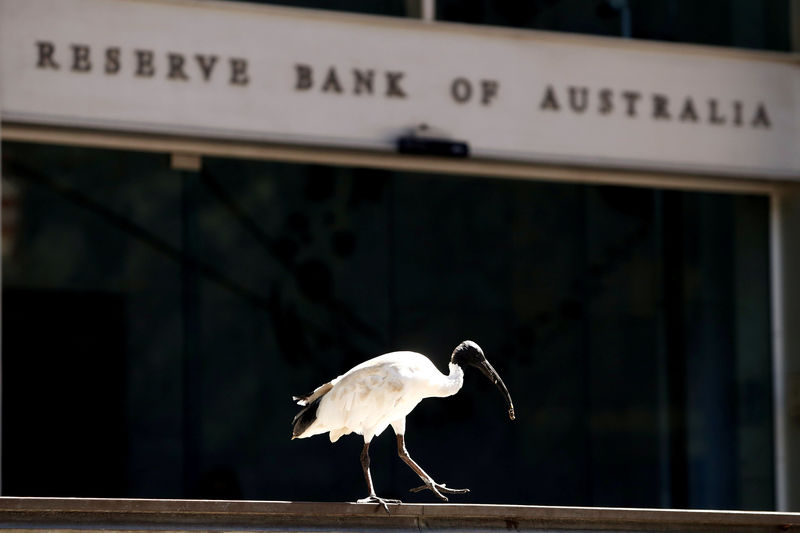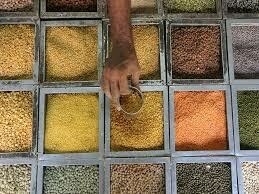 © Reuters. FILE PHOTO: An ibis bird perches next to the Reserve Bank of Australia headquarters in central Sydney
© Reuters. FILE PHOTO: An ibis bird perches next to the Reserve Bank of Australia headquarters in central SydneyBy Swati Pandey
SYDNEY (Reuters) – Australia’s central bank left interest rates at record lows on Tuesday, as expected, and sounded less confident that the economy would grow at 3 percent or more this year, in another sign rates will likely remain on hold for months to come.
The Reserve Bank of Australia (RBA) expects the country’s gross domestic product (GDP) to “grow faster in 2018 than it did in 2017”, as it entirely removed reference to expectations of “above 3 percent” growth over the next couple of years.
The change in rhetoric comes as analysts downgrade forecasts for fourth-quarter GDP, due Wednesday, which is expected to show growth slowed to around 0.5 percent, from 0.6 percent in the previous three-month period.
Annual growth likely decelerated to a lukewarm 2.4 percent, from 2.8 percent the previous quarter.
“The RBA has definitely softened its language around growth,” said Tom Kennedy, Sydney-based senior economist at JPMorgan (NYSE:). “I think the change means gradually and very slowly they’re stepping away from the 3 percent target,” he added.
“Wage growth has been low, consumption has been really weak since mid-2017, net exports have been weaker than RBA’s expectations. So when you add up all the bits and pieces you get a small figure.”
Analysts are divided evenly on the chance of a rate hike by December, while interest rate futures are not fully priced for a 25-basis point rise until early 2019.
Tuesday’s figures from the Australian Bureau of Statistics (ABS) showed a drop in rural exports and a jump in consumer and oil imports, which shaved 0.5 percentage points off gross domestic product (GDP) in the quarter.
As a result, the country’s current account deficit widened to its largest in over a year to A$14 billion ($10.89 billion).
The RBA acknowledged the slowdown in exports in the fourth quarter, calling it a temporary blip.
Adding to the dour mood, retail sales for January rose a tepid 0.1 percent when analysts had looked for a 0.4 percent gain due to weakness in clothing and department stores. Sales had dipped 0.5 percent in December.
Consumer spending accounts for around 57 percent of GDP.
Australia’s brick-and-mortar retailers have been struggling amid cut-throat competition and as relentless price discounts fail to entice customers facing paltry wage growth and mountains of debt.
One bright spot was the surprisingly strong spending by Australia’s government, which helped offset the drag from weather-dampened exports.
Tuesday’s data showed government spending rose 1.7 percent in the fourth quarter to an inflation-adjusted A$83.16 billion ($64.67 billion) lifting potential for growth.
Fusion Media or anyone involved with Fusion Media will not accept any liability for loss or damage as a result of reliance on the information including data, quotes, charts and buy/sell signals contained within this website. Please be fully informed regarding the risks and costs associated with trading the financial markets, it is one of the riskiest investment forms possible.
Source: Investing.com



























